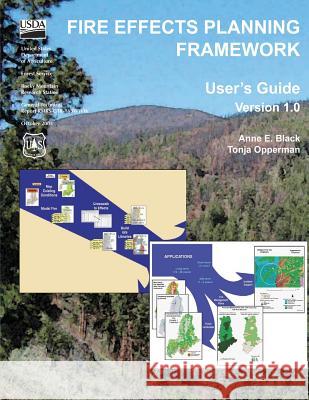Fire Effects Planning Framework: A User's Guide (Version 1.0) » książka
Fire Effects Planning Framework: A User's Guide (Version 1.0)
ISBN-13: 9781480270398 / Angielski / Miękka / 2012 / 70 str.
Each decision to suppress fire reinforces a feedback cycle in which fuels continue to accumulate, risk escalates, and the tendency to suppress fires grows (Miller and others 2004). To make good decisions regarding fuels and fire, managers need to assess the benefits, risks, and consequences of fire and fire suppression. Without information on the benefits of fire, justifying wildland fire as a management strategy may be unpractical. The need for information is immediate, but existing decision-support tools focus primarily on the negative consequences of fire. The challenge, then, is to create and institutionalize a more balanced analysis of fire (fire stewardship), considering both ecological and social benefits and risks. The goal can be facilitated by using tools that managers already have and working within existing planning and activity frameworks (e.g., using fire management and prediction tools to inform resource planning). Information on benefits must be available before major planning efforts (long-range planning, annual Fire Management Plan development, incident management). Additionally, information must be expressed in units that directly translate into those currently used to describe both land and fire management plans. These needs determined the focus of the Fire Effects Planning Framework (FEPF): to allow functional integration of fire and resource tasks; to express fire effects in terms meaningful to both fire and resource staff; and to enable immediate use by relying on existing tools and knowledge. The FEPF allows managers to systematically determine (map and quantify) where and under what fire weather conditions fire is likely to create benefits or pose threats to important ecological conditions or management targets. FEPF is not a stand-alone tool; it is more of a conceptual model or 'meta-model' that sequentially links state-of-the-art, publicly available analysis tools, data, and knowledge to generate information for a variety of planning scales from long-range to site-specific. The key is to develop this information in the off-season and have it available in digital and/or hard copy form for decision-makers during the fire season.
Zawartość książki może nie spełniać oczekiwań – reklamacje nie obejmują treści, która mogła nie być redakcyjnie ani merytorycznie opracowana.











